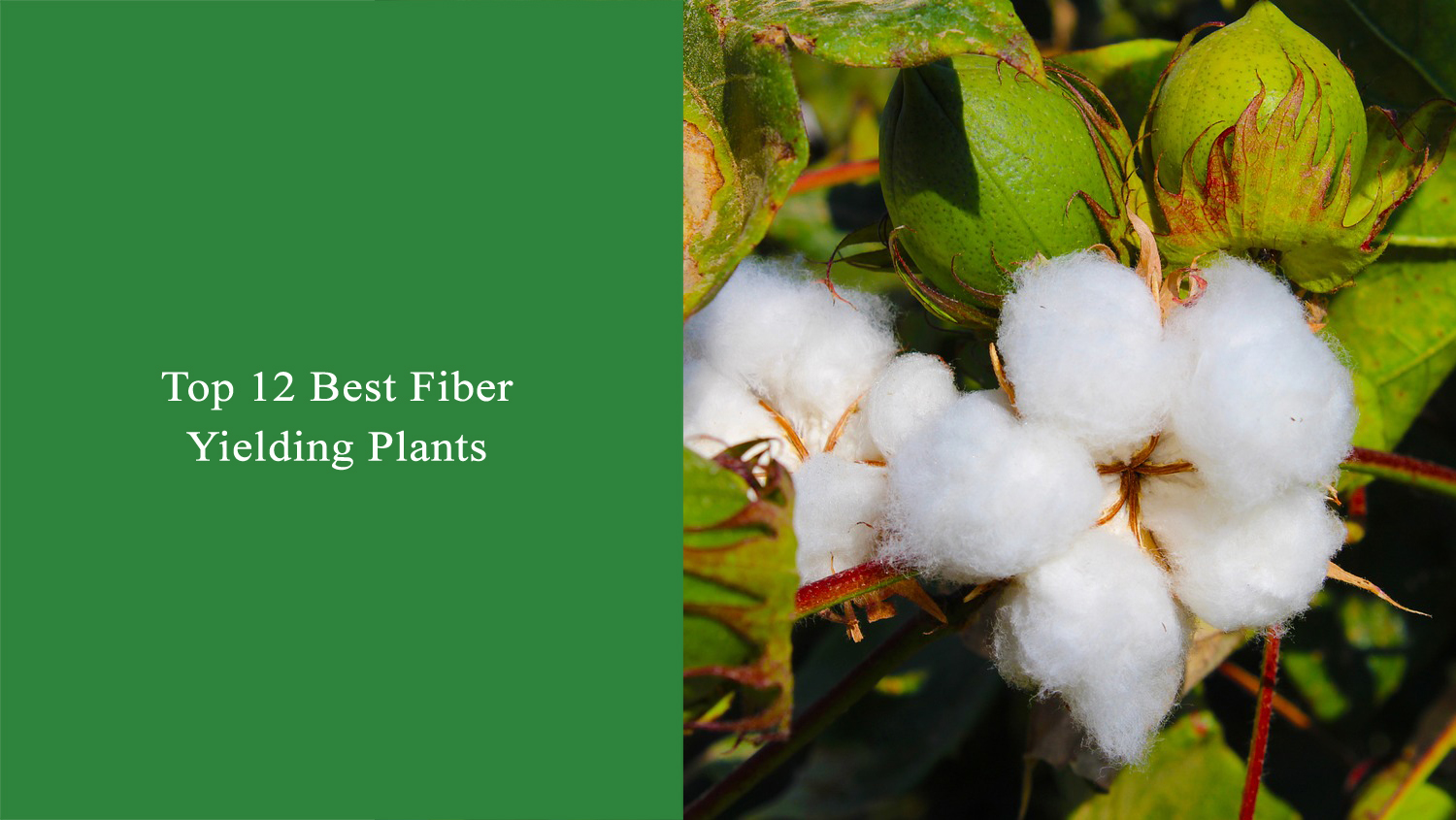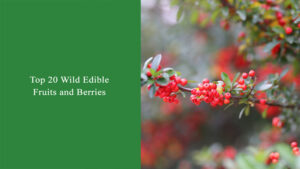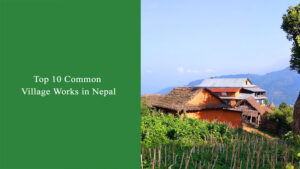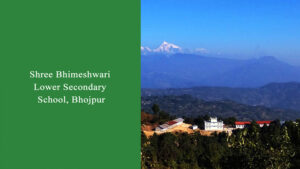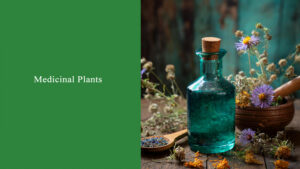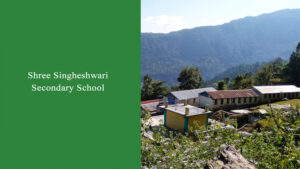Top 12 Best Fiber Yielding Plants
Want to know the best fiber yielding plants?
Fiber is filaments that are extracted from animals, plants, and petroleum products. The bast fibers are also called soft fibers and leaf fibers are hard fibers.
In this article, I will share with you the top 12 best fiber yielding plants.
1. Girardinia diversifolia
Common name: Himalayan nettle or Nilghiri nettle.
Nepali Name: Allo or Allo Sisnu
Family: Urticaceae
Flowering season: August- October
Fruiting season: October- November
Parts used: Stem
Fiber quality: Fine, silky, strong, long, lustrous
Products: Vests, shawls, bag, rope, twine
Description: Girardinia diversifolia is the most used fiber yielding plant in Nepal. It is a perennial herb with yellowish flowers that grows up to 3m high. Stinging numerous hairs are present in the green leaves and stems of a plant that cause temporary irritation or pain.
It grows in hilly regions of Nepal and few parts of India, Myanmar, Malaysia, and China. This wild plant is found at an altitude of 1200-3000 meters, mostly in moist and semi-shade places of the riverside.
Fiber extracting method:
– Remove the leaves and stinging hairs of the plant. Then collect bark.
– Boil collected bark on the alkaline solution for 3-4 hours.
– Then wash with clean water after it is beaten.
– At last, rub with rice husk or maize flour, and then dry under sunlight.
2. Cannabis sativa
Common name: Hemp
Nepali Name: Ganja
Family: Cannabaceae
Flowering season: July
Parts used: Stem
Fiber quality: Fine, strong, lustrous
Products: Paper, carpets, ropes, canvas, hats
Description: Cannabis sativa is the best fiber yielding plant found at temperate to subtropical areas. It is a short-lived annual plant native to eastern Asia.
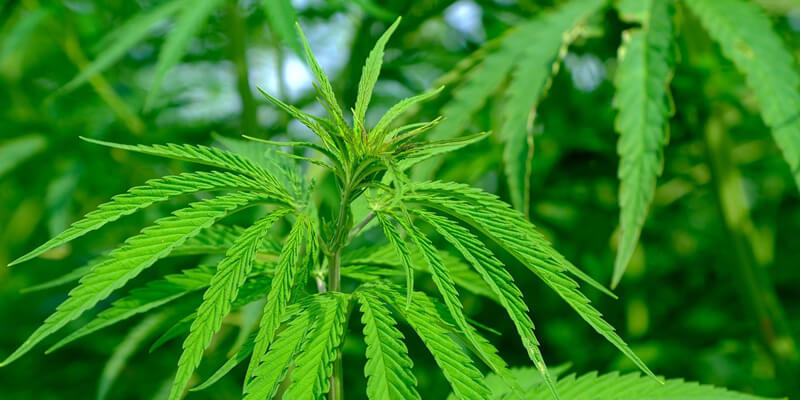
This plant is a unisexual plant having narrow leaves and edible seed. It grows in loamy, moist, and nitrogen-rich soil. This plant grows up to 2.5-5 m high.
Fiber extraction method:
– Harvest Cannabis sativa stem, then collect bark from the stem.
-Dry and beat bark.
-Beat stems. so fiber separates from the woody core.
3. Daphne bholua
Common name: Paper daphne
Nepali name: Lokta
Family: Thymelaeaceae
Flowering season: January to April
Parts used: Inner bark
Fiber quality: Strong
Products: Paper (Lokta), rope
Description: Daphne bholua is a deciduous flowering shrub indigenous to the Himalayan region of Nepal. Its height ranges from 2.5-4 m tall.
The plant offers leathery green leaves, blackberries, and pink flowers having strong fragrant. Viable seed can germinate in well-drained light sandy soil. But the plant parts are poisonous.
Fiber extraction method:
– Harvest stem, then collect the bark.
-Dry and cook raw bark with alkaline additives.
-Wash, beat, and separate fiber.
4. Agave americana
Common name: Century plant or American aloe
Nepali name: Ketuki
Family: Asparagaceae
Parts used: Leaves
Flowering season: June or July
Fiber quality: Smooth, flexible and lustrous, biodegradable
Products: Rope, coarse cloth, paper, carpets, nets, etc.
Description: Agave americana is the best fiber yielding succulent plant found in tropical areas of Nepal, Spain, California, and the United States. It is a long-lived (About 10-30 years) plant growing up to 9 m high.
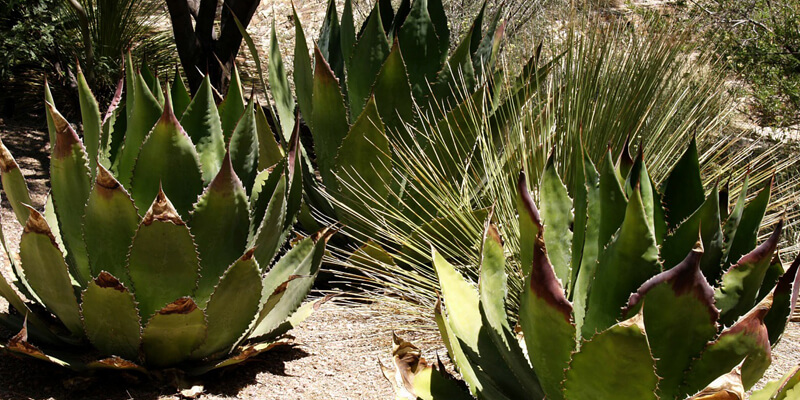
This plant is drought tolerant and offers yellowish flowers and gray-green leaves with needle-sharp spines. It prefers hot climate and well-drained sandy soil.
The fiber extracted from the leaves of Agave americana is also called Pita Fibers. Same as bamboo plant, Agave americana dies after its blossoms.
Fiber extraction process:
-Firstly, harvest mature leaves of the plant.
-Then, crush and beat collected leaves (with a rotating wheelset with blunt knives)
-Wash with water and dry in sun.
5. Bambusoideae
Nepali name: Bans
Family: Poaceae
Parts used: Stem
Description: Bamboo is one of the fastest-growing (21 cm per day) perennial plants native to Nepal, India, Korea, Japan, and Australia. Its height reaches up to 30 m high.
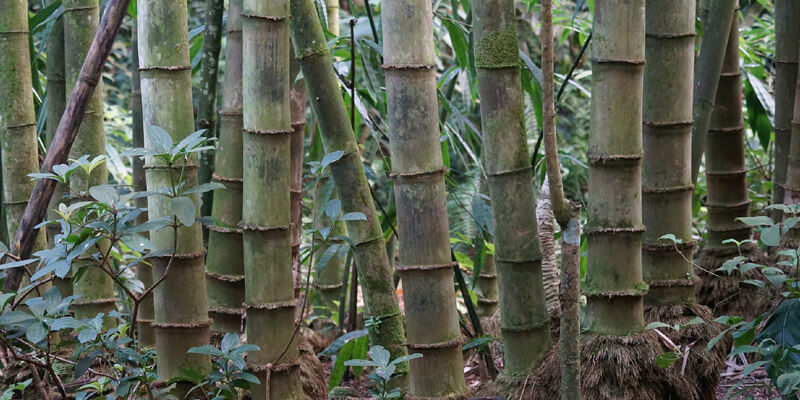
This plant contains a hollow stem, rhizome, and small numerous flowers. Normally bamboo doesn’t contain flowers. But at the end of its lifetime, it bears flowers. Bamboo is planted to control landslide and CO2.
6. Gossypium hirsutum
Common name: Upland cotton
Nepali name: Kapas
Family: Malvaceae
Parts used: Seed floss
Fiber quality: Strong, durable, washable
Products: Clothes, rubber-tire fabrics, cushions, yarn
Description: Gossypium hirsutum is one of the best fibers yielding plants having yellowish-white or pinkish-purple flowers. They can be either shrub or tree. Normally it grows up to 2-3 m high.
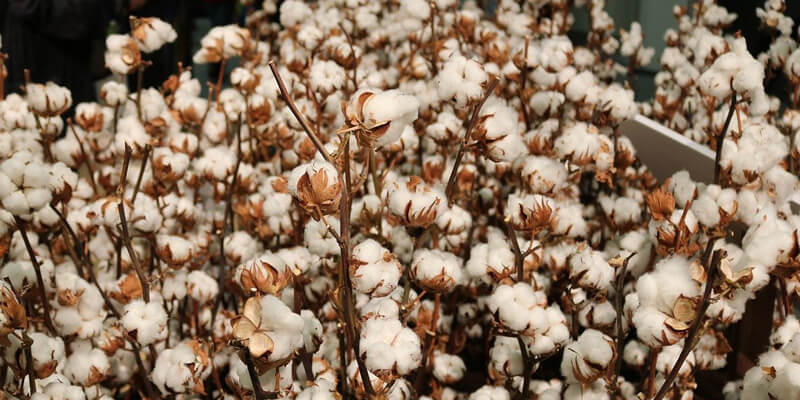
They are found in tropical to temperate regions of America, Africa, Nepal, China, the Philippine, Pakistan, and India. The plant prefers fertile soil and a warm climate. Oil can extract from the seed of cotton which is used as soap, salad, cosmetics, and cooking oil.
7. Bombax ceiba
Common name: Red cotton tree
Nepali name: Simal
Family: Malvaceae
Flowering season: February- May
Parts used: Inner bark, Seed floss
Fiber quality: Soft, strong
Products: Clothing, rugs, sheets, blankets
Description: Bombax ceiba is a best fiber yielding plants. The plant offer edible red flowers and green leaves (palmately compound). It is a deciduous plant found in tropical regions of Nepal, China, Myanmar, Thailand, Indonesia, and the Philippines, etc.
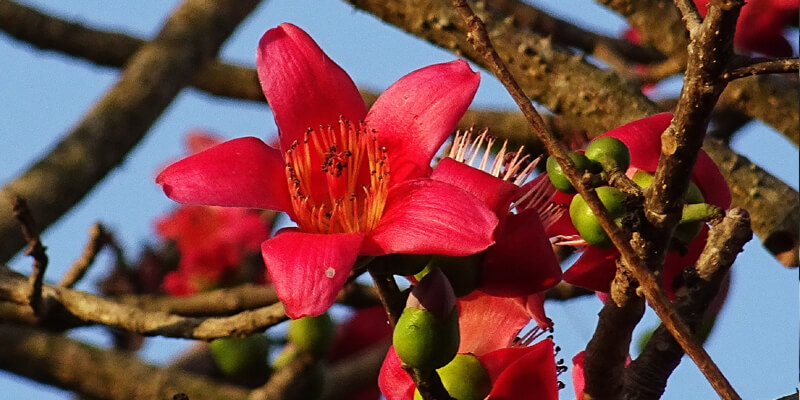
Bombax ceiba grows up to 20-60 m tall. It is a wild plant and sometimes cultivated for its fiber ornamental and medicinal value. This plant is drought tolerant and fast-growing.
8. Calotropis gigantea
Common name: Crown flower or giant milkweed
Nepali name: Aank
Family: Apocynaceae
Parts used: Seed floss, stem
Fiber quality: durable
Products: Ropes, pillow, carpets, fishing nets
Description: Calotropis gigantea is a perennial shrub. It bears a white or pale purple flower, light green leaves, and poisonous latex. This is a native plant to Nepal, China, India, Bangladesh, Indonesia, and Malaysia.
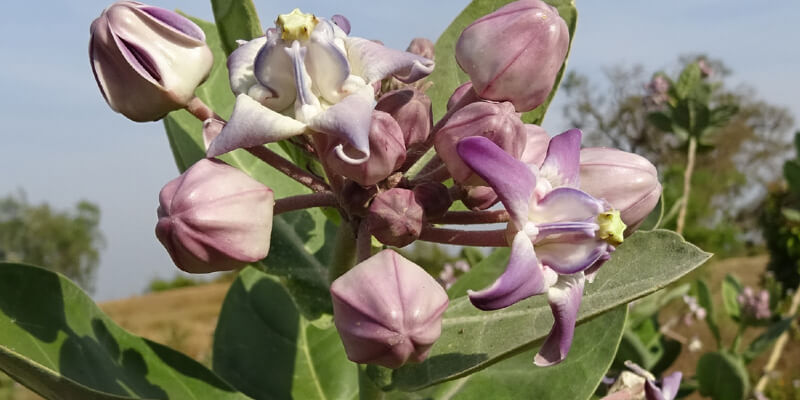
Its height ranges from 5-10 meters. Mostly, this plant grows in sandy soil and hot climate. In some places, it has ornamental and medicinal value.
9. Yucca gloriosa
Common name: Adam’s needle or Spanish Dagger
Family: Asparagaceae
Flowering season: July to September
Parts used: Leaves
Products: Clothing, blankets, rugs, sheets,
Description: Yucca gloriosa is an ornamental plant cultivated for leaf fiber and medicine. It is found at tropical to the sub-tropical zone of south Europe and south-eastern N. America. This plant prefers well-drained and sandy soil. It bears white flowers, sword-shaped fleshy leaves, and edible fruit.
10. Boehmeria macrophylla
Common name: False Nettle
Nepali name: Kamle, Dhadale
Family: Urticaceae
Flowering season: June to September
Fruiting season: September to January
Parts used: Stem
Fiber quality: Strng, Shiny
Products: Bags, Nets, Clothes, Rope
Description: Boehmeria macrophylla is a perennial and deciduous plant growing up to 1-3 m tall. It is found at the hilly to Himalayan regions of Nepal, China, Sikkim, and Bhutan.
Boehmeria macrophylla prefers moist and rocky places of riverside. Its stems are glabrous, leaves opposite, and flowers clustered.
11. Grewia optiva
Common name: Bihul, Dhaman
Nepali name: Ghotli, shyalphusro
Family: Malvaceae or Tiliaceae (earlier)
Flowering season: April-September
Fruiting season: September-December
Parts used: Bark
Products: Rope
Description: Grewia optiva is one of the famous fodder plants distributed in sub-tropical areas regions of Nepal (Dharan), India, and Pakistan. Its height reaches up to 13-15 m tall.
This plant contains ashy-white bark, yellowish-white flower, hairy leaves, and edible fruit. It is a perennial plant cultivated for fiber, fodder, and fuel.
12. Ananas comosus
Common name: Pineapple
Nepali name: Bhuin katahar
Family: Bromeliaceae
Fruiting season: April to May
Parts used: Leaves
Description: Pineapple is a perennial plant growing up to 1-2 m tall. It offers short stem, waxy leaves, and edible fruit. This plant is found in the tropical areas of Nepal, Brazil, the Philippine, and Africa.
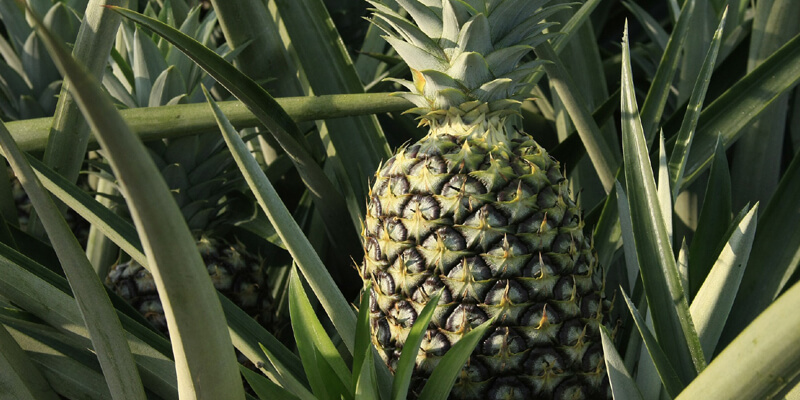
It is cultivated for fruit and fiber. Hummingbirds and bats are the main pollinators of this plant. It prefers sandy, fertile, and acidic soil with hot temperatures (65-96 degrees F). Pineapple can propagate by using suckers and crowns.
I hope this article helped you find the best fiber yielding plants.
